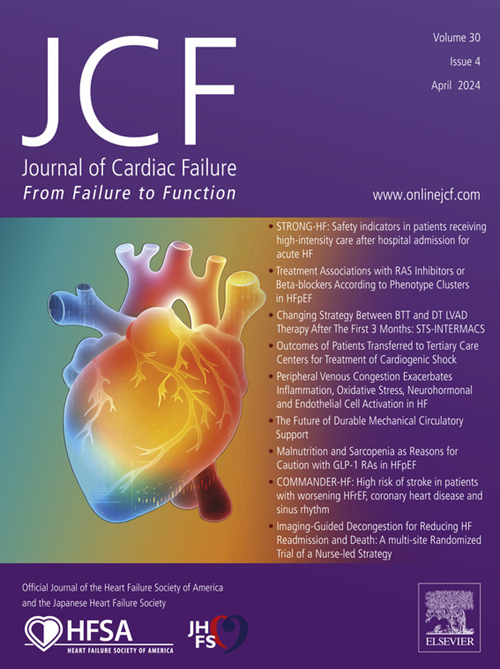The Heartmate 3 Device In Severely Obese Patients
IF 6.7
2区 医学
Q1 CARDIAC & CARDIOVASCULAR SYSTEMS
引用次数: 0
Abstract
Introduction
Left ventricular assist devices (LVADs) are a lifesaving therapy for patients with severe heart failure. The only currently commercially available LVAD is the HeartMate 3, which features an intrathoracic, fully magnetically levitated, centrifugal-flow pump. Currently, there is an extremely limited body of evidence on outcomes for patients with severe (class III) obesity, defined as a BMI of 40 or more, who receive a HeartMate 3 device for circulatory support. LVAD therapy carries the risk of significant morbidity. Thus, the ability to recognize which patients will benefit most from an LVAD will assist in shared decision making when patients are ill enough to consider mechanical circulatory support.
Hypothesis
Increased perioperative risk in morbidly obese patients has been well-documented; however, we hypothesize severely obese patients can still demonstrate significant benefit from the HeartMate 3 LVAD.
Methods
193 patients received a HeartMate 3 LVAD between July 1st, 2016 and July 1st, 2023. Patients with a BMI of less than 40 were classified as our control group (n = 166) and had an average BMI of 27.4. Those with a BMI of 40 or greater were classified as severely obese (n = 27) and had an average BMI of 45.0. This was a retrospective cohort study conducted via review of patient charts.
Results
Mortality: We found no significant difference in mortality at 30 days (p = 0.3), 1 year (p = 0.8), or 2 years (p = 0.9). (Figure 1). Length of stay: Length of ICU stay post-implantation was 11.6 days for controls and 10.1 days for severely obese patients (p = 0.5). Length of total hospitalization was 24.2 days for controls and 22.9 days for severely obese patients (p = 0.7). Readmission rate: Controls were readmitted 1.9 times per year while severely obese patients were readmitted 1.6 times per year (p = 0.5). Driveline Infections: We found no significant difference in the rate of new driveline infections between groups after 2 years (p = 0.14).
Conclusion
We found no significant difference in any measured outcome for severely obese patients when compared to controls. Our evidence suggests that the HeartMate 3 LVAD offers lifesaving therapy to patients with severe obesity and should be considered in all severely obese patients who have no contraindications to LVAD implantation.
求助全文
约1分钟内获得全文
求助全文
来源期刊

Journal of Cardiac Failure
医学-心血管系统
CiteScore
7.80
自引率
8.30%
发文量
653
审稿时长
21 days
期刊介绍:
Journal of Cardiac Failure publishes original, peer-reviewed communications of scientific excellence and review articles on clinical research, basic human studies, animal studies, and bench research with potential clinical applications to heart failure - pathogenesis, etiology, epidemiology, pathophysiological mechanisms, assessment, prevention, and treatment.
 求助内容:
求助内容: 应助结果提醒方式:
应助结果提醒方式:


